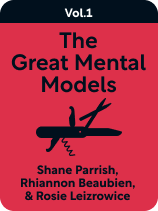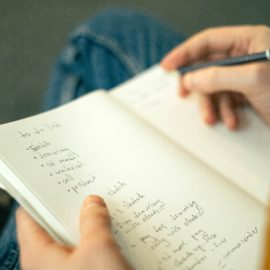

This article is an excerpt from the Shortform book guide to "The Great Mental Models Volume 1" by Shane Parrish and Rhiannon Beaubien. Shortform has the world's best summaries and analyses of books you should be reading.
Like this article? Sign up for a free trial here.
What’s the inversion model of thinking? How can it help you solve tricky problems?
In The Great Mental Models Volume 1, Shane Parrish and Rhiannon Beaubien present nine timeless, foundational mental models that will sharpen your thinking skills, and they explain how to develop your repertoire of models through a process of continuous learning. They include inversion as one of their mental models.
Read more to learn how the inversion model can help you tackle problems in your path.
The Inversion Model
As a thinking tool, to invert is to approach a problem from the end you typically don’t consider. The authors explain that we tend to approach challenges directly: by looking at the problem first and then searching for the solution. However, the direct approach sometimes fails, especially when the problem demands a creative or counterintuitive solution. When it does, try looking at the problem from the opposite angle that you started from.
The authors recommend using the inversion model as a complement to the direct approach, not to replace it. So when approaching a problem, think from both ends to see it in more detail and act more effectively.
(Shortform note: Another way to think about inversion is as negative space. When drawing, we often focus on the positive space—the lines, shapes, and colors. To invert would be to focus on the negative space, and to look at what isn’t there in order to work out what is. For instance, you might apply this to business negotiations by paying attention to what someone isn’t saying in addition to what he does say. What he doesn’t say suggests a range of information that wouldn’t otherwise be obvious.)
The authors outline two ways to use the inversion model:
#1: Assume success, then analyze what else would have to be the case. For instance, if you’d like to become more fit, you might begin with the “assumption” that you’ve built your ideal body, and then think about what lifestyle factors you changed to get there. Use these answers to guide you.
#2: Practice avoidance instead of pursuit. For example, you could minimize the risk of business failure by studying companies that failed, figuring out what caused their failures, and eliminating those factors from your business—in other words, minimize risk instead of pursuing advantages.
(Shortform note: In Money: Master the Game, Tony Robbins writes about both of these tactics as ways to figure out your financial future. Using method #1, he suggests envisioning your ideal financial future and using that to work out the habits you’ll need to get there. Method #2 is a common tactic in investing: Since markets are so unpredictable, it’s often most effective to mitigate your downside by building an all-weather portfolio, rather than trying to predict and beat the market over the long-term.)
Applying the Inversion Model
When you’re struggling to solve a problem, pause and invert. Say you’re trying to grow a blog audience, but direct methods—such as SEO—aren’t panning out. So you invert by asking, “How can I avoid failing?” Then, you might realize that a successful blog means both attracting and not repelling potential readers. Part of blogging success, then, means removing things that might turn people off to your blog, such as excessive CTAs, annoying pop-ups, or writing with poorly disguised SEO. Eliminate the factors that detract from your blog, and you could find that reader retention increases.

———End of Preview———
Like what you just read? Read the rest of the world's best book summary and analysis of Shane Parrish and Rhiannon Beaubien's "The Great Mental Models Volume 1" at Shortform.
Here's what you'll find in our full The Great Mental Models Volume 1 summary:
- What mental models are and how they work
- How to make better decisions by using mental models
- How to use your imagination to evaluate your choices






